| Online Bass Instruction with Rusty Springfield | ||
 |
||
|
Home | eMail | Articles | Audio Clips | Bass Gallery
Great Bass Tales | Photo Archive | Links | Lessons |
||
| Chords With Harmonics |
Remember that it only takes a few defining chord tones to represent the whole chord. For instance, when combined with a fretted root, a C# and G are the only notes you need to infer an A7 or it's tritone substitution, Eb7. The ability to play harmonics whose pitches are half steps apart allow you to form chord voicings similar to those sonically dense, gorgeous chords that keyboard players take for granted. Add an F# harmonic to the previously mentioned A7 chord (see diagram) and you have a very musical A13. If you play that same chord but substitute afretted Eb bass note (on the 11th fret of the E string) for the A, you've got an Eb7(#9). Cool huh?
Jaco Pastorius is the acknowledged pioneer in the use of harmonics as chords and melody. If you have not yet checked out his self titled debut album, which came out in 1976, you owe it to yourself to do so. Joni Mitchell's "Hejira" is another album worthy of your attention if you want to hear more of Jaco's prodigious use of harmonics in a groove oriented context.
There are lots of harmonic combinations for you to explore if you take the time to learn where to find them on your fretboard. The diagrams on this page illustrate a few harmonic chords for you to experiment with.
Fretted notes are designated with a gray dot.
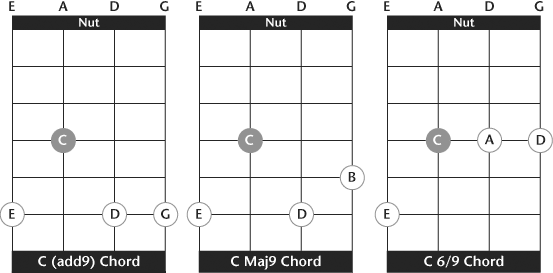
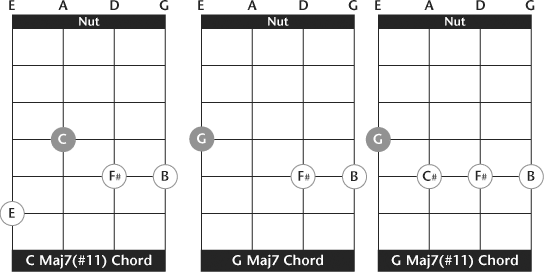
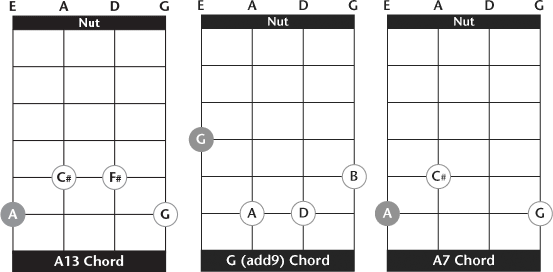
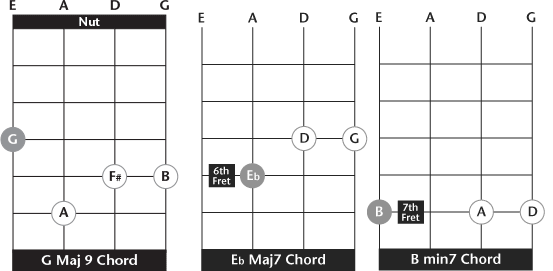
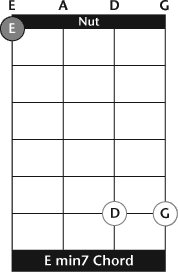 |
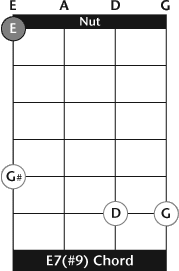 |
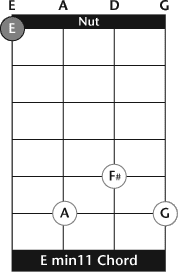 |
Note: Although the 7th (D)was omitted, this chord would still be labeled an Emin11. |
||
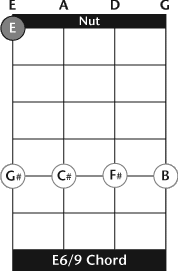 |
||
| Go to the next lesson: Quiz! |